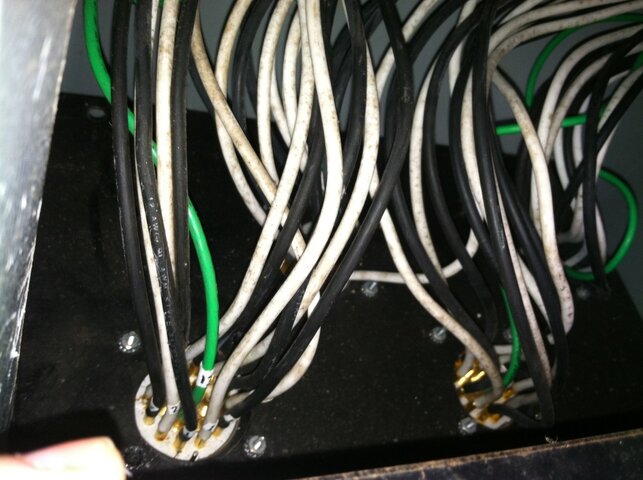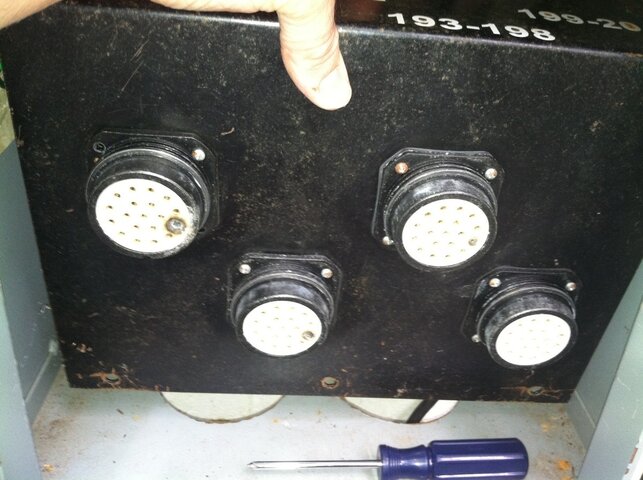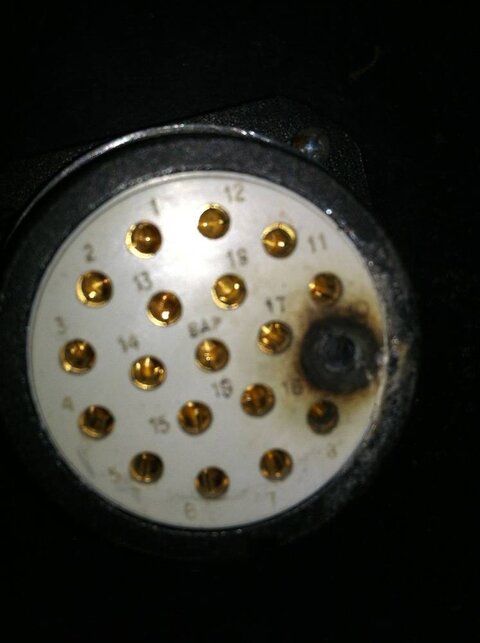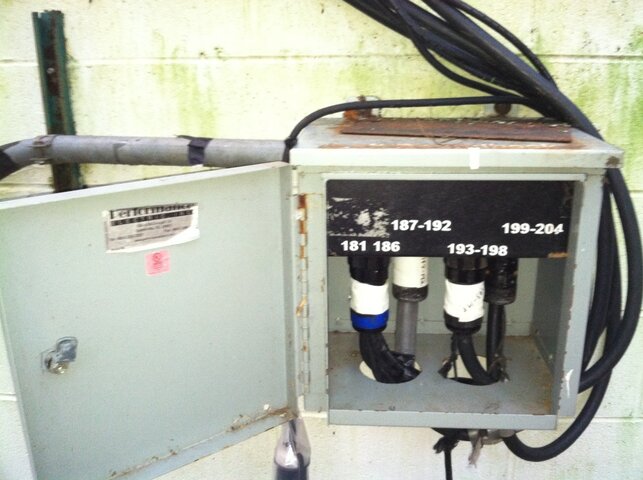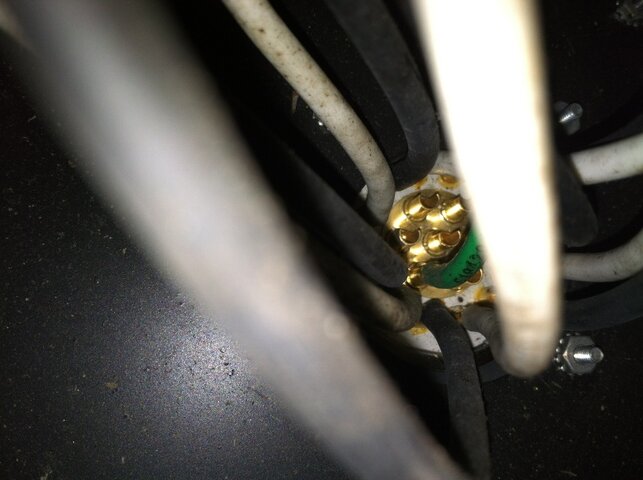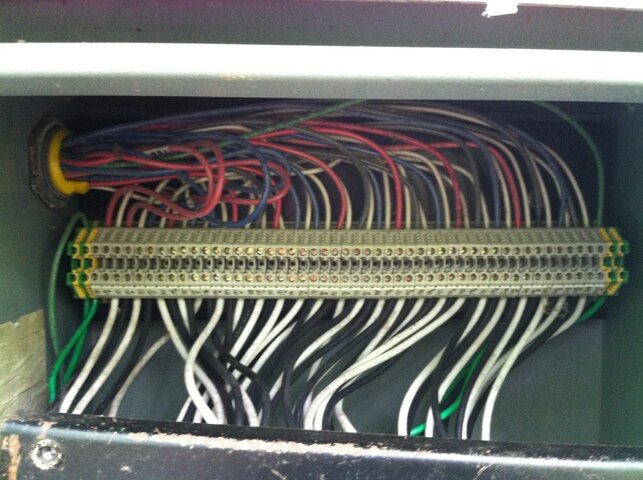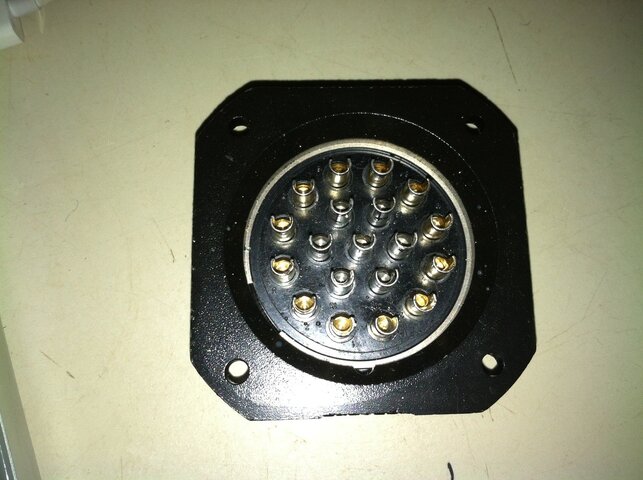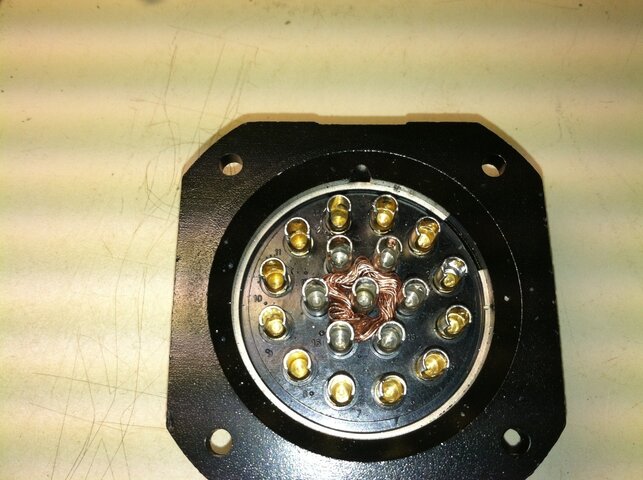SirKnightCowboy
Member
Hey Guys & Gals,
I'm working as the ME at an outdoor theatre; an amphitheater to be specific. In this space, there are many outdoor "weather proof" boxes with 1 to 4 MultiCable Outlets (19pin) spread out in various locations. My first problem is that the 9th pin in multiple of my outlets are burning out in what appears to be arch damage. When the first burn out happened, I figured it was due to a loose connection, so I had my crew go around a make sure all the connections were as tight as possible. Then it happened 3 more times within the next month and each time it was the 9th pin. My first questions are: Is this just a coincidence? What could be causing this?
Today I was finally able to get a little time to try and replace the connectors. I opened the box, unscrew the housing and saw that out of the 19 terminals, only 13 of them had wires soldered to them (6Hot, 6Neutral, and 1Ground). Terminals 1-13 were used and the 14-19 ground terminals were untouched on all 4 connectors. I know they make 12/14 Multis and 12/18 Multis but using only 1 ground for 6 possible circuits seems a bit sketchy. So my final questions is: for lack of a better term, Is this wiring kosher? If not How can I fix this?
I can upload more pic's if requested.
I'm working as the ME at an outdoor theatre; an amphitheater to be specific. In this space, there are many outdoor "weather proof" boxes with 1 to 4 MultiCable Outlets (19pin) spread out in various locations. My first problem is that the 9th pin in multiple of my outlets are burning out in what appears to be arch damage. When the first burn out happened, I figured it was due to a loose connection, so I had my crew go around a make sure all the connections were as tight as possible. Then it happened 3 more times within the next month and each time it was the 9th pin. My first questions are: Is this just a coincidence? What could be causing this?
Today I was finally able to get a little time to try and replace the connectors. I opened the box, unscrew the housing and saw that out of the 19 terminals, only 13 of them had wires soldered to them (6Hot, 6Neutral, and 1Ground). Terminals 1-13 were used and the 14-19 ground terminals were untouched on all 4 connectors. I know they make 12/14 Multis and 12/18 Multis but using only 1 ground for 6 possible circuits seems a bit sketchy. So my final questions is: for lack of a better term, Is this wiring kosher? If not How can I fix this?
I can upload more pic's if requested.
Attachments
Last edited:



